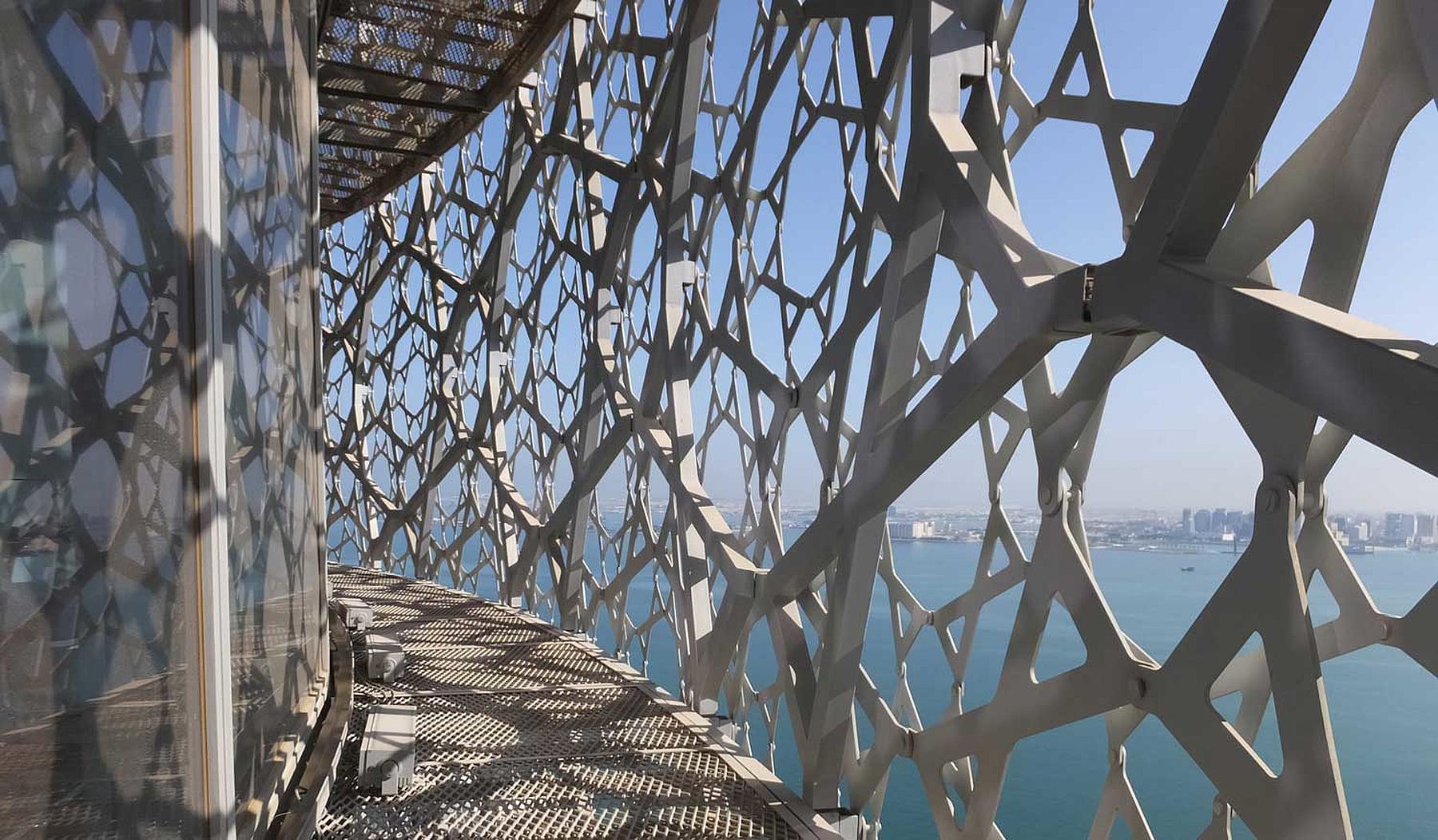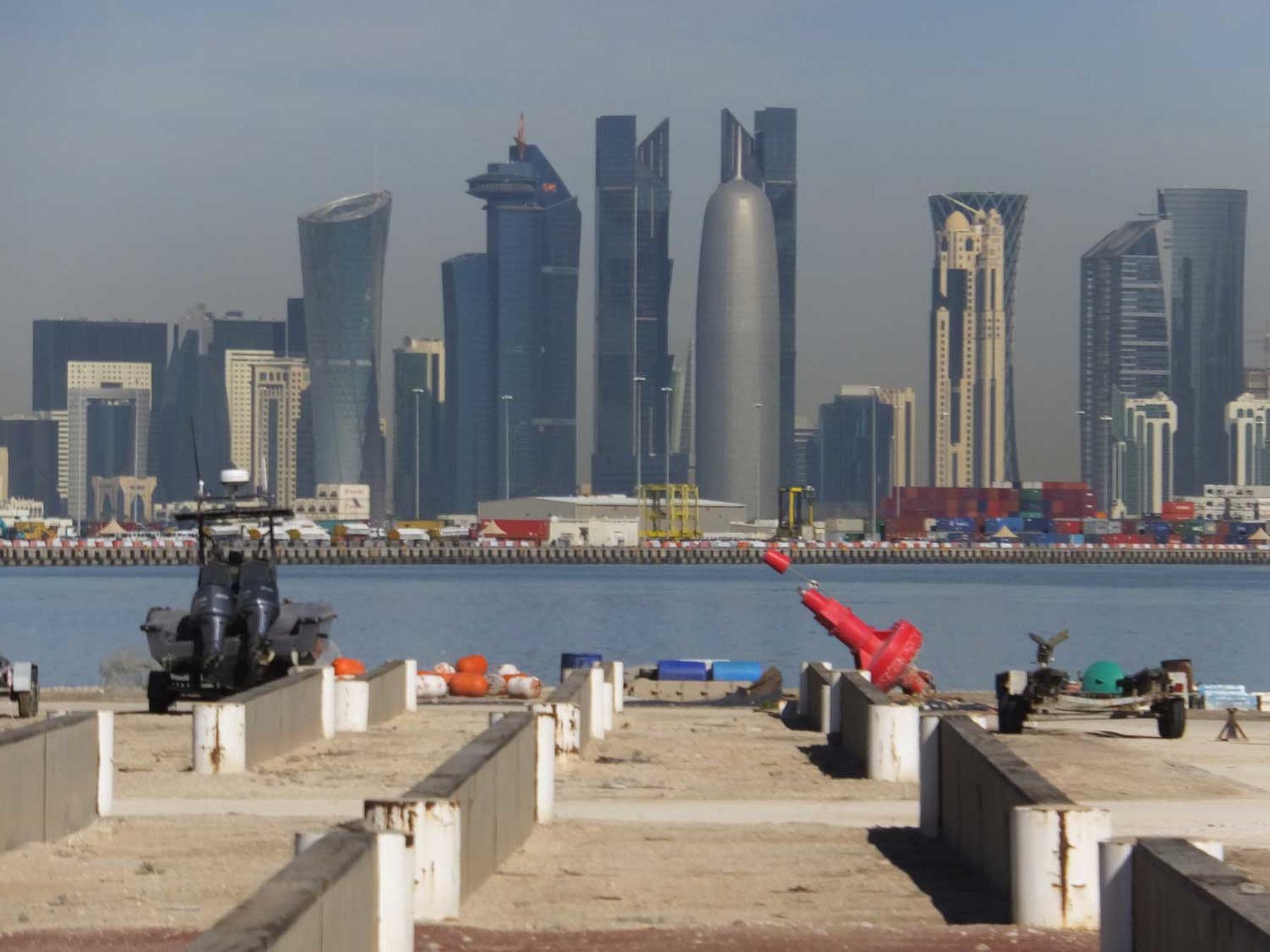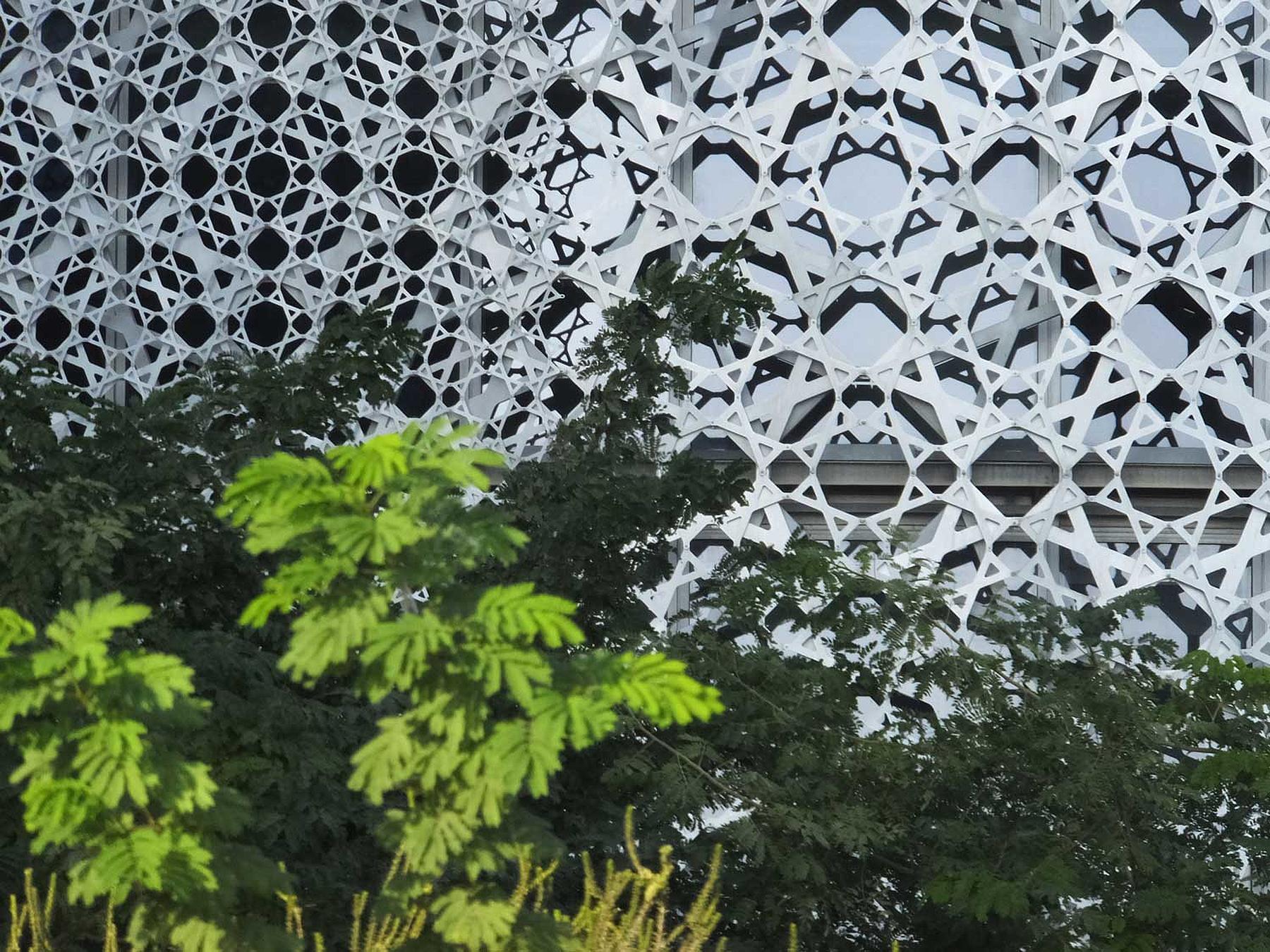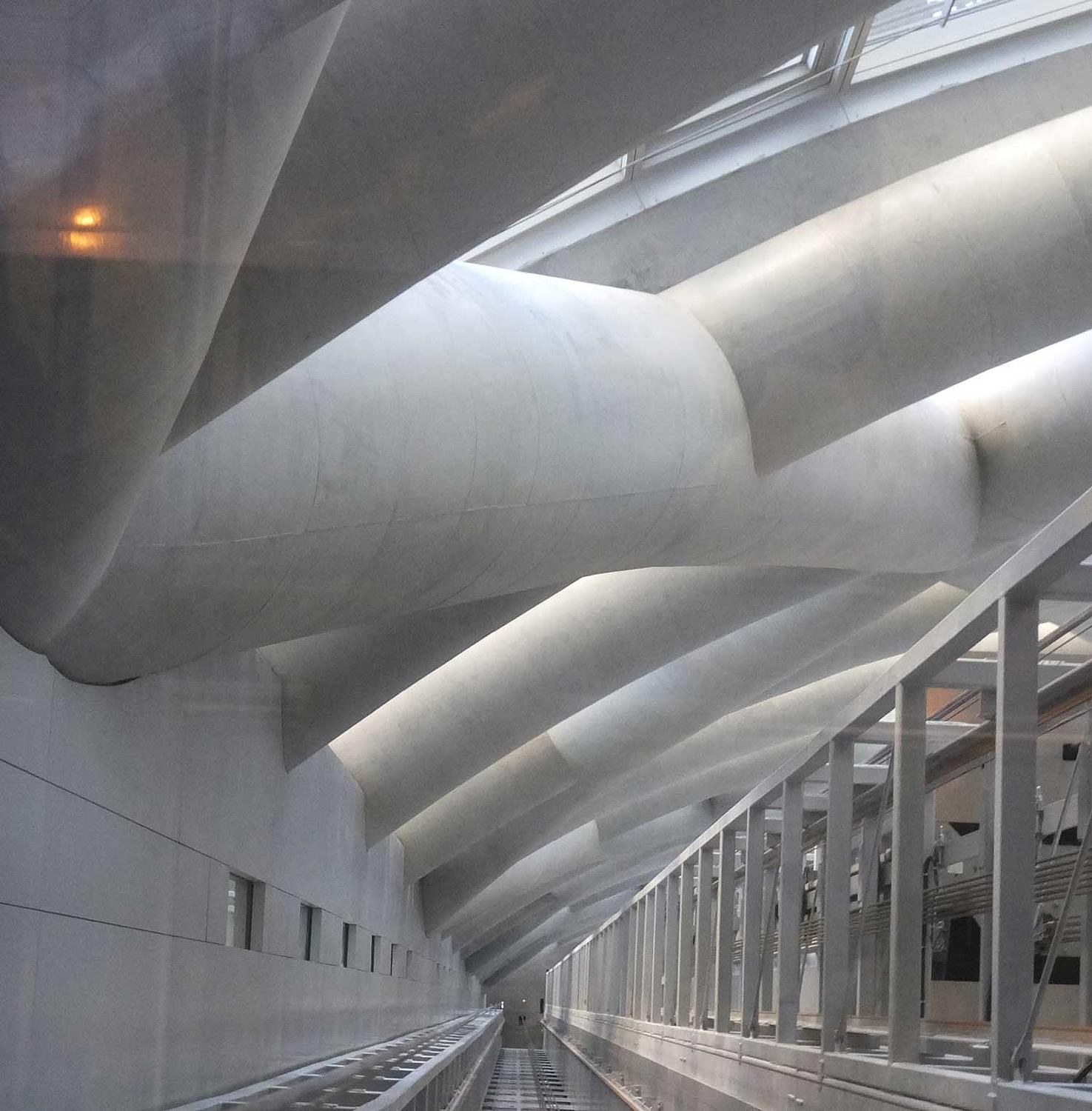In Praise Of Skin & Bones
Looking across Doha Bay at the glistening towers opposite, there is one which stands out; the Burj Doha, by Jean Nouvel. From a distance, its surface is smooth but with a lustre which draws the eye. As one approaches, the building’s skin reveals itself to be made up of three layers; a single geometric pattern cut from silver metal plate, each layer of a different scale to the others. Behind the skin is a cavity; space for the window cleaners to do their work in safety. It creates a veil of protection from the harsh Sun and filters the light within into a pattern of continually moving dappled shapes. This building is a beautiful object, sitting amongst the other isolated towers of West Bay, however – having enjoyed the way it nestles into a soft green pocket set into the ground – the profound thrill is in understanding its skeleton.
On going inside, on being lifted – weightless – within the elevator shaft in behind the ‘diagrid’ structure, and on coming out onto an office floor, the benign immensity of the angled concrete columns is striking. They are irresistible to touch; smooth like an eggshell. From far away and close up, from outside and in, to explore this building is an experience of graded scales. To be inside the building is strangely like being inside a giant, not diminished but expanded. It enables us to understand what is behind the skin.
This is an extract from
Touching the City: Thoughts on Urban Scale,
published by John Wiley
ISBN 978-1-118-73772-9




